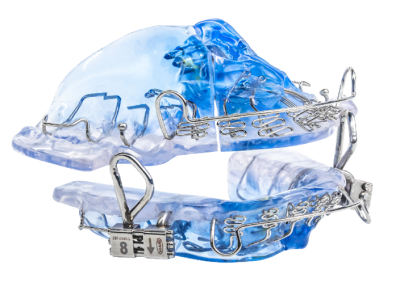In much the same way that they’re designed to expand wearers’ upper airways, Vivos Therapeutics’ slate of oral appliances have now expanded their FDA indications, too.
Collectively known as the Complete Airway Repositioning and/or Expansion (CARE) devices, the mouthpieces are newly cleared to help treat severe obstructive sleep apnea, or OSA, in adults, Vivos announced Wednesday. They’d previously racked up clearances in mild-to-moderate cases of the condition.
According to the devicemaker, the FDA nod in severe OSA is the first for an oral appliance and also makes the CARE devices the first “clear alternative treatment” to standard CPAP machines and surgical implants for severe cases of the condition.
“This achievement is a pivotal milestone for Vivos, and elevates our proven treatment options right into the mainstream of sleep medicine,” Kirk Huntsman, Vivos’ CEO and chairman, said in the announcement.
“It is even more important for the millions of severe OSA patients who are desperate for an effective alternative treatment. Before this, severe OSA patients’ only realistic treatment options were CPAP, neurostimulation implants or other invasive surgeries,” Huntsman continued. “Today, they have what we believe is a far more desirable option that is very affordable and doesn’t require surgery or a lifetime of nightly use and intervention.”
Vivos’ suite of CARE devices include the mandibular repositioning nighttime appliance, or mRNA, and a modified version of the device known as the mmRNA, as well as the DNA mouthpiece, which is named after its longer daytime-nighttime wear period.

All three are retainer-like devices that are fitted to a patient’s anatomy and continually adjusted to help expand the palate and upper airway. According to the company, as many as 98% of OSA cases can be traced back to the underdevelopment of the mouth and jaw, and other anatomical abnormalities. In those cases, widening the area can give the tongue and other nearby tissues more room, allowing them to stop blocking the airway.
Vivos’ devices aren’t meant to be used in perpetuity, like a CPAP machine, but rather for only a set treatment period—the average is about one year, per Vivos—until the airway expansion is complete.
Study data that Vivos submitted to the FDA in its application for expanded clearance tracked the progress of 73 people with severe OSA, who used the company’s devices for an average treatment period of 9.7 months. After treatment, according to Vivos, 80% of the participants saw their conditions improve by at least one classification—as in, from a severe to a moderate case—or by at least 50% on the Apnea Hypopnea Index.
Almost all of the participants, 97%, saw their conditions improve or stay the same, and Vivos found that the overall results were stronger among this group than in those with mild or moderate OSA.
The company reported that while no participants in any studies of its devices have experienced persistent safety issues, some have gone on to require aligners after the airway-expanding treatment.